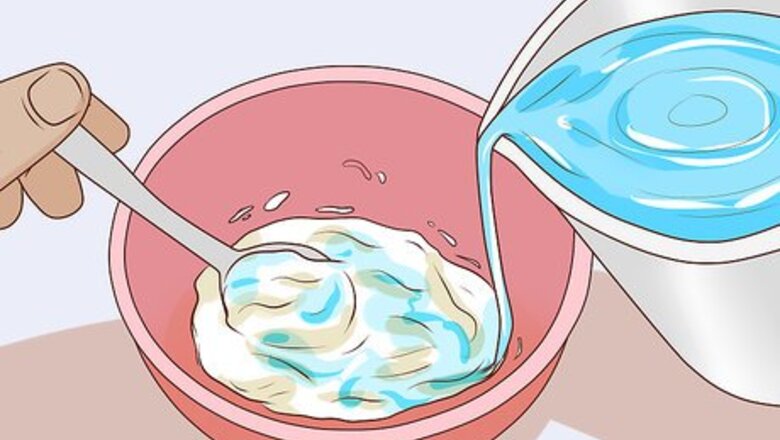
views
Applying the Primer
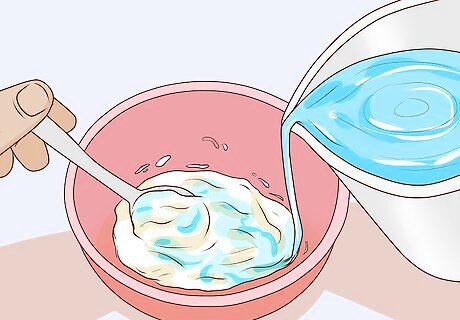
Stir your primer and add a touch of water to it to dilute it. There’s no set amount of water that you’ll need to add. Instead, scoop the primer into the bucket or cup that you’ll be using to hold it. Then, add a little bit of water at a time while stirring the gesso and continue adding water until it has the consistency of a heavy cream. Your gesso will probably be really thick, so it’s important to dilute it to make it easier to apply and smooth out. It’s better to shoot for too little water rather than too much, since if you add too much water to your gesso, your only choice is to start this process over.
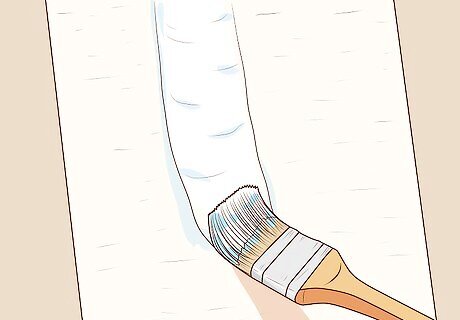
Use a wide brush to apply the gesso in vertical strokes. Go from the top of the canvas to the bottom, stroking parallel to the length of the canvas. Cover the canvas completely while also spreading the primer as evenly and thinly as possible. Try to create as flat a surface as possible with the gesso. For best results, use a stiff brush with relatively firm fibers. If your canvas is pretty big, you can also use a roller brush instead. Be sure to paint the edges of the canvas as well; these can sometimes be hard to hit with just vertical strokes.
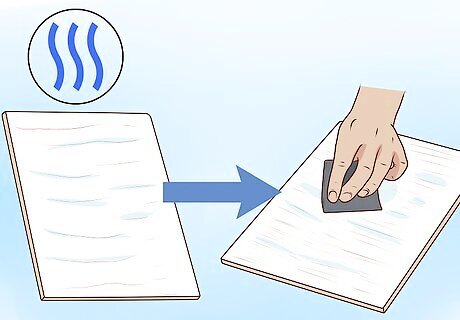
Allow this first coat to dry, then lightly sand it to smooth it out. Gesso doesn’t take long to dry, but give it at least an hour to completely dry for best results. Use fine sandpaper to give your gesso a once-over and give it a smooth texture moving forward. If you don’t want your canvas to have a smooth texture, you can choose to skip this part. Be sure to brush off the dust from your canvas after you sand the gesso. While the gesso is drying, take this time to clean off your brush. If you leave the gesso on the bristles for too long, it will be very difficult to remove.
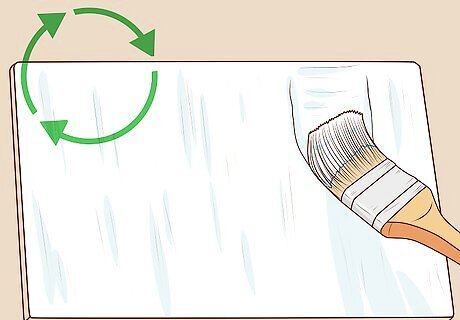
Repeat these steps to apply a second coat using perpendicular strokes. When you go to apply this second coat of gesso, be sure to turn the canvas 90 degrees first. This way, when you apply the primer with vertical strokes, these strokes will be perpendicular to the ones you used for the first coat. Using perpendicular strokes will make the finish of your texture much more even. You can apply as many coats of primer as you like, but most people choose to apply 2 for a smoother texture. Just 1 coat of gesso will give your canvas a relatively rougher finish.

Sand the gesso after it’s dried for a smoother surface. For best results, give your second coat an hour to dry before you go to sand it. Use very light pressure and short back-and-forth motions to avoid scraping off too much of the gesso. Be sure to remove the dust from your canvas after you sand it. Once you’ve finished sanding the gesso, your canvas is ready to be painted on!
Choosing the Right Gesso and Sizing Glue
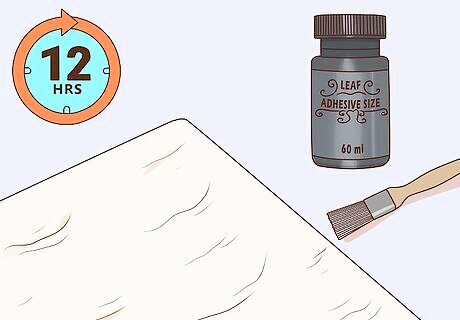
Apply sizing glue to your canvas if you’re painting with oil. Sizing glue is a liquid adhesive that artists apply to canvas to prevent oil paints from seeping into the fibers. Apply the glue to your canvas with a small brush using short strokes. Then, leave it to dry for about 12 hours. If you’re using an oil paint, you’ll definitely need to size your canvas before you apply your primer. If you’re painting with acrylic, sizing the canvas is optional. You can buy sizing glue at any art supply store that also sells gesso.
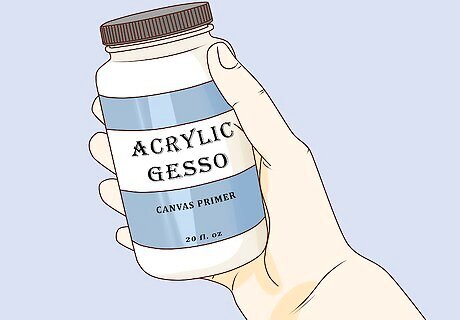
Select a primer intended for the kind of paint you plan to use. Simply put, you should use acrylic gessos if you’re painting with acrylic paint, oil gessos if you’re painting with oils, and so on. Many acrylic gessos can be used with both acrylic and oil paints, so you’re probably safe to stick with an acrylic primer for your project. You can buy the different types of gesso at any art supply store. Read the product label to find out what types of paint each gesso works with.

Use white gesso if you want the colors of your painting to appear lighter. The white gesso background will subtly show through the colors of your painting, making them appear lighter and softer. You can make the colors of your painting even lighter by starting to paint while the gesso is still wet. White gesso is also the most common color variety of primer for canvas painting, since white is an easy background to paint on.
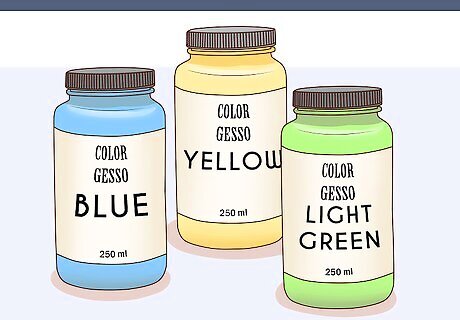
Choose colored gesso if you want your colors to look sharper. This is especially useful if you’re painting a portrait or a still-life image. The colors that you use will look more brilliant against a dark background. The color of gesso that you use should depend on the mood you’re trying to strike. For instance, if you’re painting a landscape, consider using an earthy color like umber or dark blue. Note that colored gessos tend to be more expensive and are sometimes harder to find than traditional white gessos. You can also choose to make your own colored gesso by mixing acrylic paint with a standard white primer. Vary the amount of paint that you add to the gesso to change the final color.

Opt for student grade gesso if you just want cheap, white primer. Student grade gesso is more watery than artist grade, but it will get the job done if you’re just trying to paint a simple painting. Student grade primers are usually only available in white, so they may be your best bet if you want a white background for your painting. Student grade gesso is cheaper than artist grade because it contains more filler and less pigment.
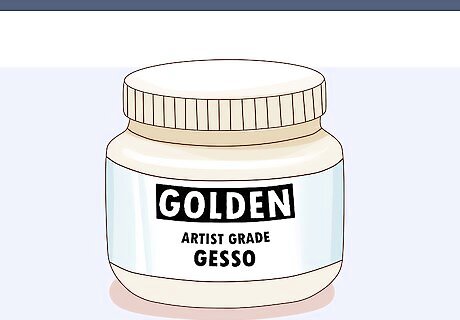
Choose artist grade gesso if you want a higher quality primer. Artist grade gesso will give your painting a “toothier” finish, meaning that it will look more textured and a bit rough. Most colored gessos are also artist grade, so if you want to use a colored gesso, you’ll probably have to go with artist grade (unless you want to mix it yourself).















Comments
0 comment